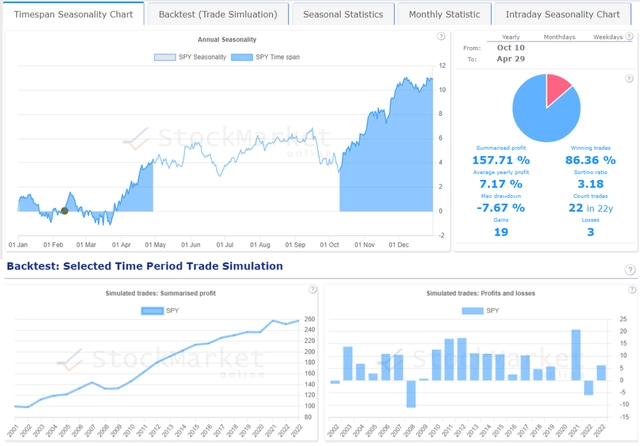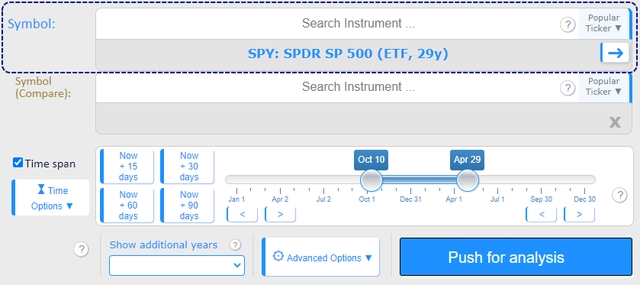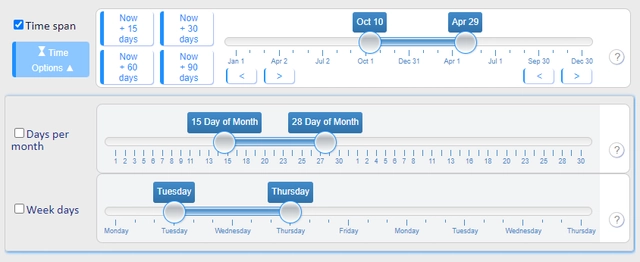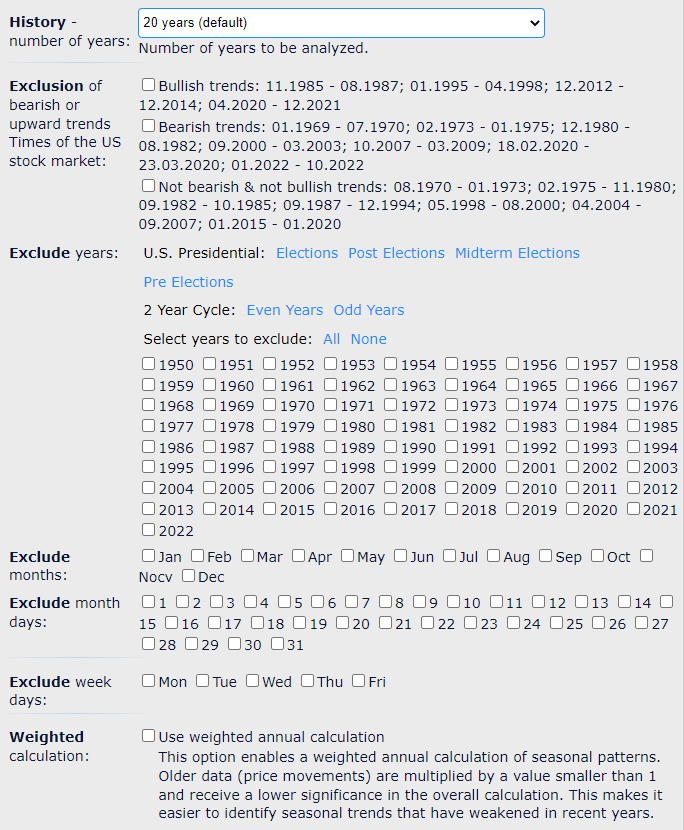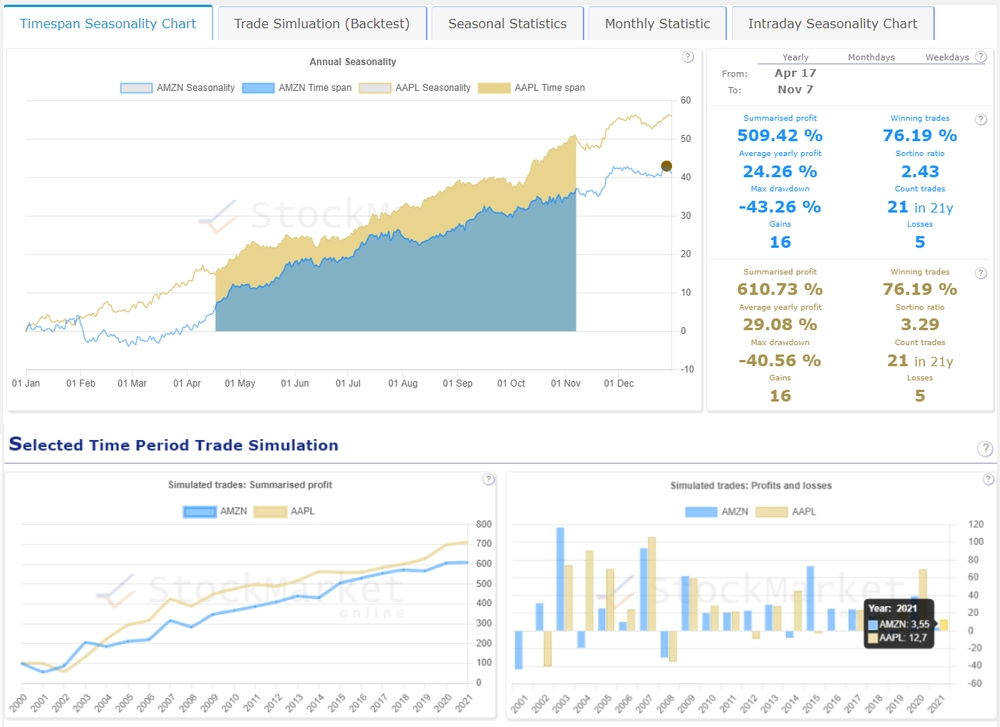Seasonality Chart
We help you to create your own seasonality charts according to your needs with a few clicks at a high professional level.
How to Use Seasonal Charts Profitably
If you want to use a seasonal pattern profitably, the quality of the seasonality is crucial.
Looking at a simple seasonal chart is not enough for this!
You need a backtest to see if the recurring pattern has produced stable profits in each period and what drawdown has occurred.
Other statistical key figures and charts show qualitative details of monthly, weekly and weekday performance.
For the optimal time to buy, we show seasonal intraday charts for instruments with high trading volume.
If you want to use seasonality profitably, you need more than just a seasonality chart.
Our Seasonality Chart Analyzer shows you all relevant data for your analyses and your success.
What is a Seasonality Chart?
A seasonality chart is a graphical representation of the patterns and trends in data that repeat over time. The first step in creating a seasonality chart is to define the time scale. This could be daily, weekly, monthly, or even yearly. The time scale will determine the frequency of the data points used to create the chart.
How does the Seasonal Chart Analyzer Work
1. Choose the instrument to be analyzed
There are over 20,000 stock market instruments available to you.
With the "Popular Tickers" button, we have provided the most frequently used instruments for quick access for you.
2. Select the time period to be analyzed
There are three different time periods available. The default period is the period within a year. Under the "Time options" button, you can also specify days within a month or weekdays within a week.
You can combine all three time periods. For example, in the period October to February, you can always analyze from the 15th to the 30th of each month.
3. Additional options
We have provided you with numerous options to further refine the analysis.
You can additionally show individual yearly developments in the seasonal chart.
You can exclude bullish or bearish stock market phases from the analysis. Of course, you can also include years, months and days of the week.
There is also a function to weight the data for calculation. The weighting calculates older data with lower weighting and newer data with higher weighting.
4. Analyze the result
Next to the seasonal chart you can see the relevant key figures.
In the backtest tab, you can see the course of the performance if you had traded the defined period in the past. In the corresponding trade list you can see the maximum drawdowns and the details of the individual trades.
The seasonal statistics show the seasonal averages of individual years, months, days in the month and days of the week.
A monthly statistic shows you the seasonal monthly development. Furthermore we show the profit rate, the minimum and maximum return with the corresponding year.
The Intraday Seasonal Chart shows the seasonal development of the last 30 days.
Professional analysis tools for your success
All three Seasonality tools are part of the Seasonality Essential subscriber offer.

